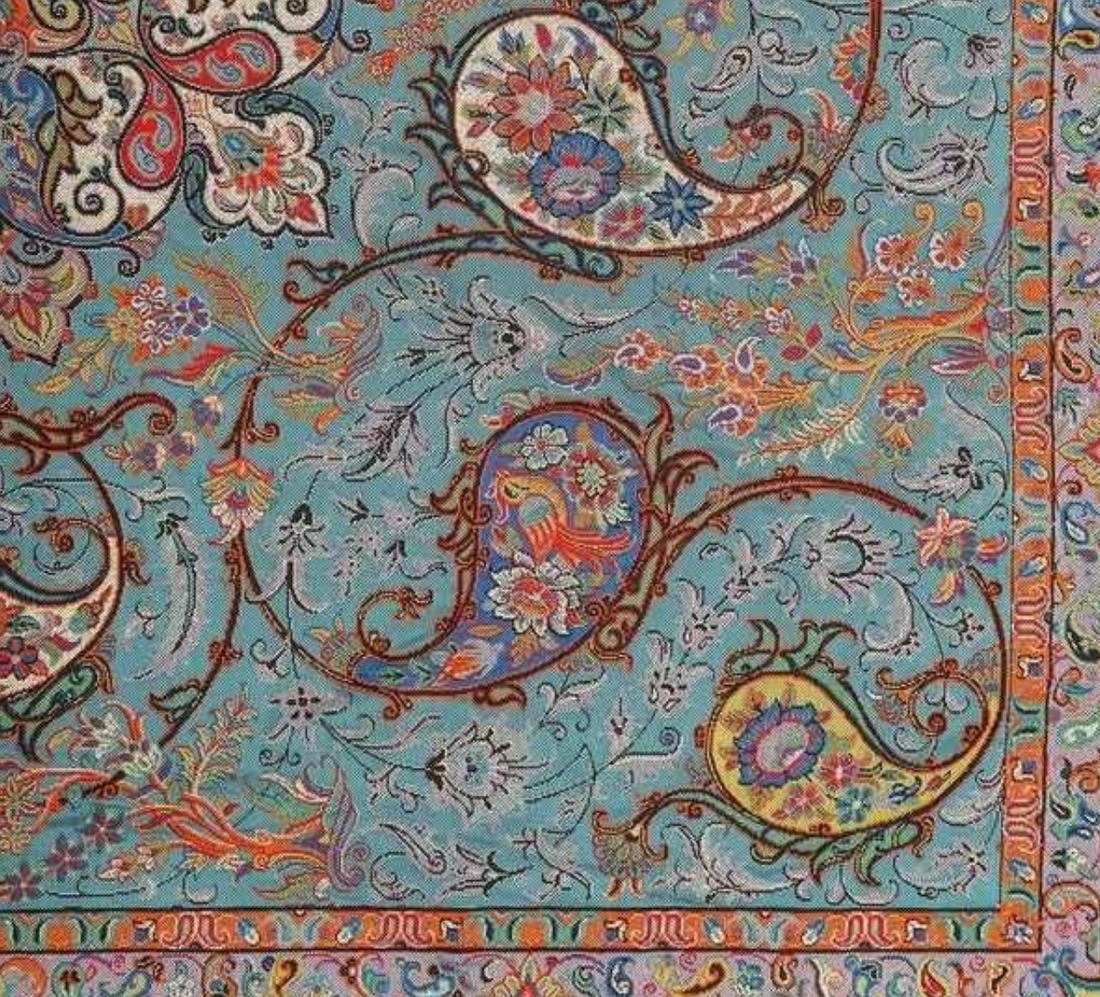Many of the printed silk sarees we choose to make our lampshades feature this iconic motif – and this is mainly because we love the designs but coincidentally these patterns symbolize so much of what inspires us – the history behind the trade between the East and West; the transfer of ideas and influences seen in textiles across the world, and the confluence of artistic inspiration which feeds into the thinking behind our designs
We love the 'English' aesthetic of merging textiles, rugs and artefacts whose original design sprung from a different corner of the globe – and the stories they evoke, and how this in turn adds another layer of ‘texture' to an interior. It's fascinating to trace the journey that Paisley has made over the centuries – to see how it has crisscrossed the continents and still remains so sought after.
The term Paisley is a British term used to describe the ‘Boteh Jegheh' or buta – a droplet like motif originating in ancient Persia. The seed-like symbol is thought to represent many things – a floral spray combined with a cypress tree; a Zoroastrian symbol of life and eternity; a representation of fertility or even an emblem signifying Yin and Yang.
Examples of Boteh Jegheh can be found in the architecture of ancient mosques in Afghanistan, dating back as far back as the 9th century.
Traditionally, Boteh Jegheh pattern was also used in the design of Termeh, an Iranian highly decorated, hand-woven cloth. Marco Polo makes reference to “quantities of a certain silk tissue known as Yazdi, which merchants carry into many quarters to dispose of.” Yazd and Kerman, cities in Afghanistan, were the centres of the production of Termehs as was Kashmir and the Ferghana Valley (in modern day Uzbekistan and Tajikistan).

Sofreh Ghalamkar with Boteh-Jegheh design - Esfahan
Trading of textiles and other commodities along The Silk Roads goes back many centuries but with the growth of the East India Company the pattern was brought to Europe from India and Persia during the 18th and 19th centuries mainly in the form of Kashmir shawls. These intricate and highly desirable shawls became all the rage, helped along the way, no doubt by being prized by royalty across Europe. The Empress Josephine acquired hundreds of them from her husband, Napoleon, who brought them home after his various campaigns.

Königin Pauline Württemberg wearing a Kashmir Paisley Shawl. Painting by Joseph Karl Stieler – ca. 1825. She was born a Württemberg and married a Württemberg. She is holding her son Karl, who married Grand Princess Olga.
There is an interesting French connection here as in 1804 Joseph Marie Jacquard invented the first programmable loom in Lyon which thankfully, over time, transformed the child labour market so dominant in weaving until then. In fact, Napoleon granted Jacquard the patent so that he received a royalty for each loom bought.
As Kashmir shawls became popular in the West, imitators emerged most successfully in Paisley, Scotland, and it is for that reason that we now refer to the pattern by that name. It is also known in the US as “Persian Pickles” and in Wales as “Welsh Pears”.
During the 19th Century, the Paisley pattern started to attract a more progressive following. Its story was part of “a cultural exchange, and also an industry.” The Victorian era saw trade between Britain and India flourish, and Liberty's enlightened founder Arthur Lazenby Liberty, a friend of Oscar Wilde “who had real flair and exquisite taste”, expanded his emporium thanks largely to a paisley-orientated collection.

Original Liberty print
This coincided with the Arts and Craft Movement and William Morris adapting the design in his interiors, and the Pre-Raphaelites depicting sumptuous paisley textiles in their paintings.

A William Morris rug
And we now zoom forwards to the 1960s to see the next revival of Paisley pattern, which became synonymous with the “Summer of Love” and the psychedelic era. The Beatles were huge fans, and John Lennon even painted his Rolls-Royce with the pattern.

Since the 1960s, Paisley continues to be featured in textile designs – both for fashion and interiors. Designers as diverse as Yves Saint Laurent, Etro, Alexa Chung and Pringle have all designed collections using the motif; and fabric and wallpaper designers such as Thibault, Anna French, Zoffany and GP & J Baker have some beautiful interpretations.


And of course, coming full circle, we use Paisley patterns in many of the sarees we choose to make our silk saree lampshades. These are mostly printed sarees – as embroidered silk does not work well for gathered lampshades.

If you would like to see more of our collection of Paisley silk sarees, do get in touch.
Thanks for reading this!
